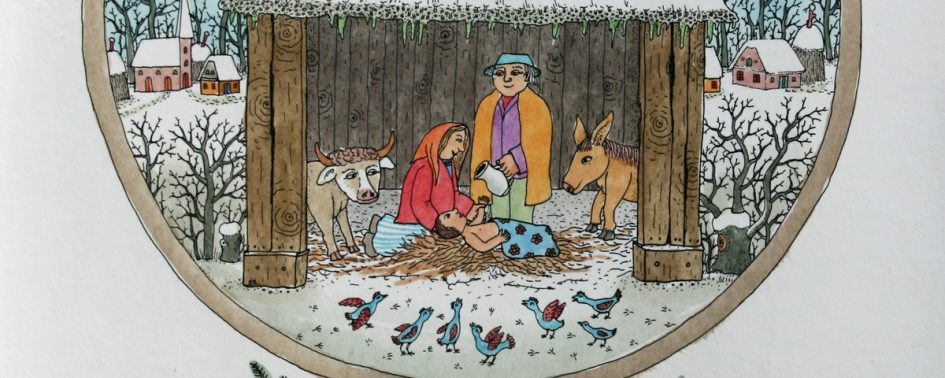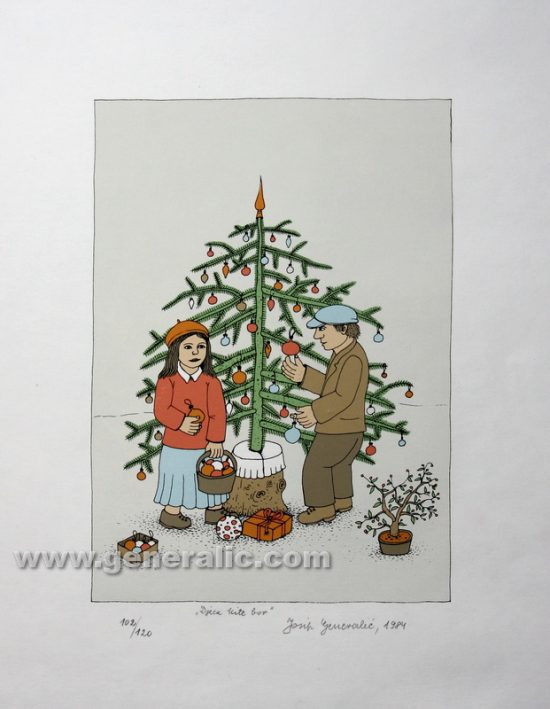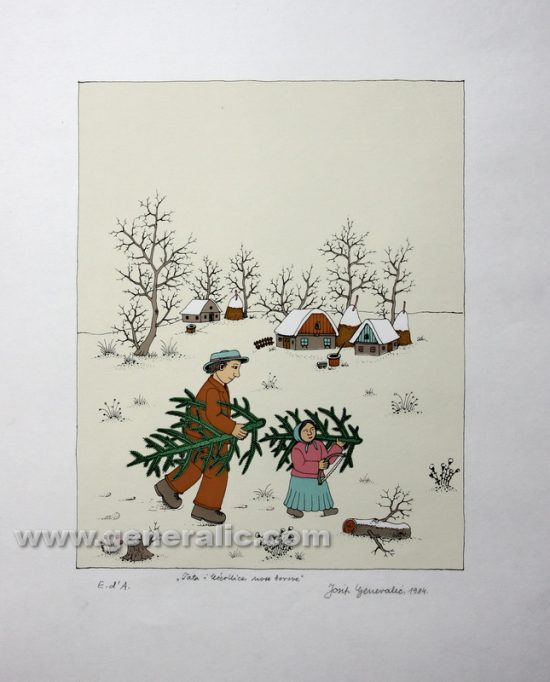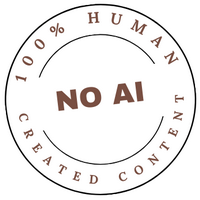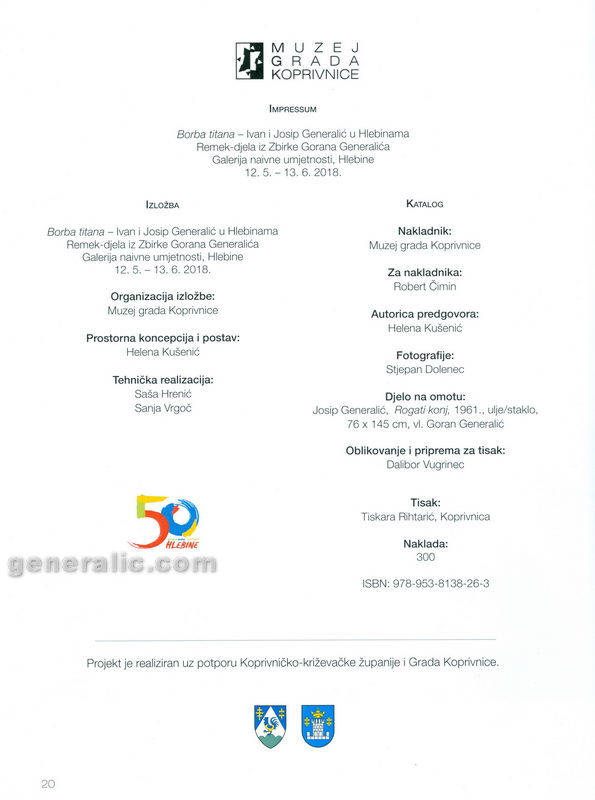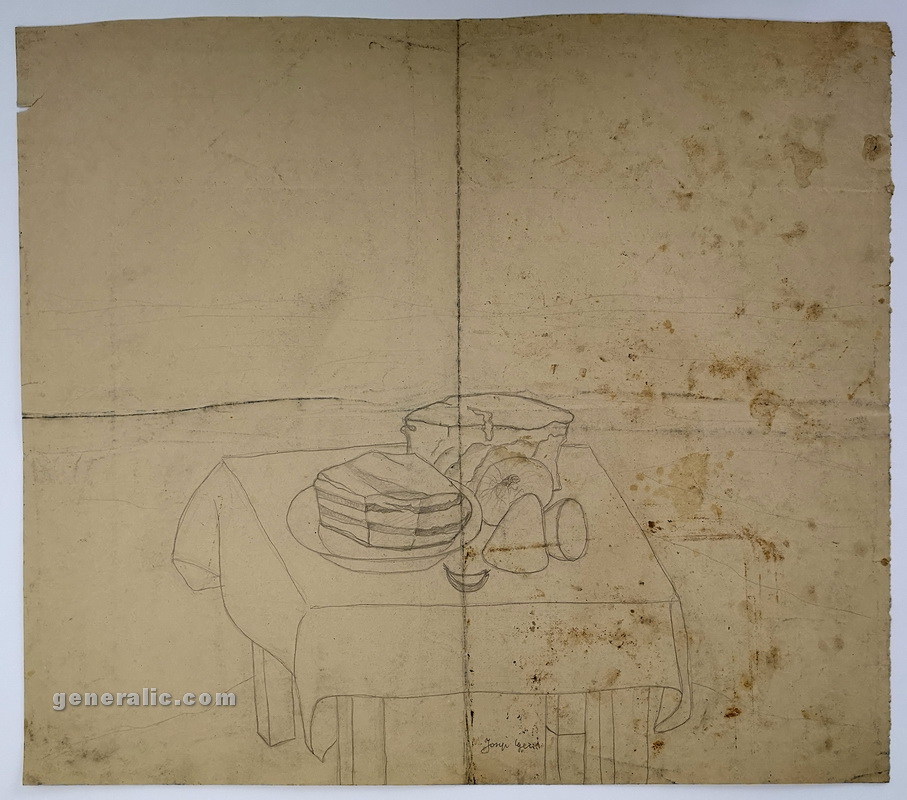[NA PRODAJU / FOR SALE]
o
(HR) Božić u Hrvatskoj ima dugu i bogatu tradiciju koja se prenosi s generacije na generaciju. Pripreme za Božić započinju s adventom, a ljudi često izrađuju adventske vijence s četiri svijeće, koje simboliziraju četiri nedjelje do Božića. Badnjak, dan prije Božića, obilježava se paljenjem badnjaka, obično velikog drvenog panja, koji simbolizira toplinu i zajedništvo obitelji. Na Badnjak se pripremaju posni obroci, često riba, kao dio katoličkog običaja. Polnoćka, svečana misa u ponoć, vrhunac je Badnjaka, kada vjernici slave rođenje Isusa Krista. Na sam Božić, obitelji se okupljaju na svečanom ručku, gdje se često poslužuju tradicionalna jela poput purice s mlincima i raznih kolača. Jaslice, prikaz Isusovog rođenja, postavljaju se u crkvama i domovima diljem Hrvatske. Božićni blagdani u Hrvatskoj također uključuju običaje darivanja i pjevanja božićnih pjesama, ili kolendi. Posebno mjesto zauzimaju tradicionalne božićne pjesme kao što su “Narodi nam se” i “Radujte se narodi”. Ovi običaji pridonose stvaranju toplog i zajedničkog ozračja koje karakterizira božićno vrijeme u Hrvatskoj.
Božić i Uskrs česte su teme umjetničkih djela Ivana i Josipa Generalića.
(EN) Christmas in Croatia has a long and rich tradition that is passed down from generation to generation. Preparations for Christmas begin with Advent, and people often make Advent wreaths with four candles, which symbolize the four Sundays until Christmas. Christmas Eve, the day before Christmas, is marked by lighting a Christmas tree, usually a large wooden stump, which symbolizes the warmth and togetherness of the family. On Christmas Eve, fasting meals, often fish, are prepared as part of Catholic custom. Midnight mass, a solemn mass at midnight, is the highlight of Christmas Eve, when believers celebrate the birth of Jesus Christ. On Christmas itself, families gather for a festive lunch, where traditional dishes such as ground turkey and various cakes are often served. The nativity scene, depicting the birth of Jesus, is set up in churches and homes throughout Croatia. Christmas holidays in Croatia also include the customs of giving gifts and singing Christmas carols, or carols. Traditional Christmas carols such as “Narodi nam se” and “Rejoice peoples” occupy a special place. These customs contribute to the creation of a warm and communal atmosphere that characterizes the Christmas season in Croatia.
Christmas and Easter are frequent themes in the artworks of Ivan and Josip Generalić.
o
- Josip Generalić, JG-S03-01(6), Djeca kite bor (Children decorating a tree), svilotisak / silkscreen, 68×47 cm 29×20 cm, 1984 – 200 eur
o
- Josip Generalić, JG-S13-02(8), Tata i kćerkica nose borove (Father and girl carrying trees), svilotisak / silkscreen in colour, 64×49 cm 33×26 cm, 1984 – 200 eur
o
(HR) Uskrsno jaje je jedan od najvažnijih simbola Uskrsa, koji simbolizira novi život i uskrsnuće Isusa Krista. Uskrsna jaja, poznata kao pisanice, često se bojaju i ukrašavaju različitim motivima, što je stara tradicija u mnogim dijelovima Hrvatske. Crvena boja jaja često se povezuje s Kristovom krvlju, dok šareno ukrašena jaja simboliziraju radost i nadu. Pisanice se daruju kao znak ljubavi i prijateljstva, a u nekim krajevima postoji običaj razbijanja jaja, pri čemu se ljudi natječu čije je jaje jače. Ovaj običaj također naglašava povezanost i zajedništvo obitelji i zajednice tijekom Uskrsa.
Zec je simbol plodnosti i obnove, a tijekom Uskrsa povezuje se s novim životom i proljećem. U mnogim kulturama, uskršnji zec donosi djeci darove, poput čokoladnih jaja, što dodaje element radosti i iščekivanja blagdanu. Iako zec nije tradicionalni simbol u svim dijelovima Hrvatske, njegova popularnost raste pod utjecajem globalnih običaja vezanih uz Uskrs.
(EN) The Easter egg is one of the most important symbols of Easter, symbolizing new life and the resurrection of Jesus Christ. Easter eggs, known as “pisanice”, are often colored and decorated with different motifs, which is an old tradition in many parts of Croatia. The red color of eggs is often associated with the blood of Christ, while colorfully decorated eggs symbolize joy and hope. Easter eggs are given as a sign of love and friendship, and in some regions there is a custom of breaking eggs, where people compete to see whose egg is the strongest. This custom also emphasizes the connection and togetherness of family and community during Easter.
The rabbit is a symbol of fertility and renewal, and during Easter it is associated with new life and spring. In many cultures, the Easter Bunny brings children gifts, such as chocolate eggs, which add an element of joy and anticipation to the holiday. Although the rabbit is not a traditional symbol in all parts of Croatia, its popularity is growing under the influence of global customs related to Easter.
o
Na popustu (Discounted)
- Umjetnine ponuđene niže su na popustu zbog lošijeg stanja papira (mrlje i sl.)
- The artworks offered below are discounted due to the poor condition of the paper (stains etc.).
